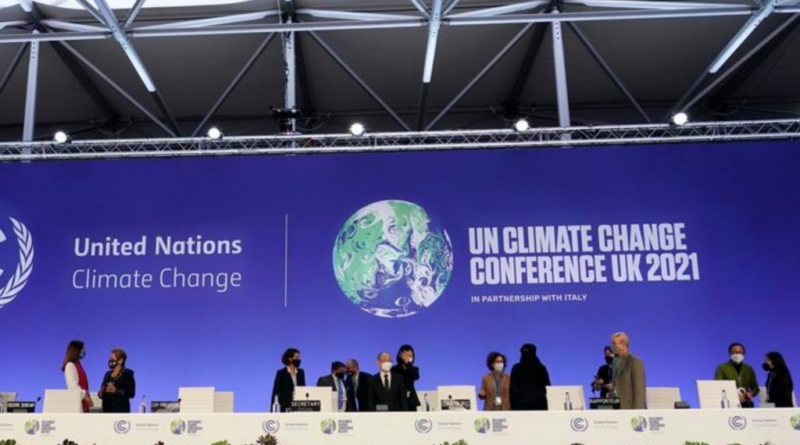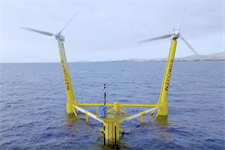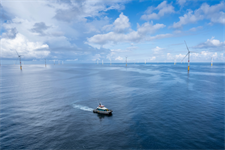COP26: A Wind Industry Score-sheet
Energy Disrupter

1. Ambition and NDCs:
The submission of new NDC targets by 124 Parties, including the EU27, by COP26 shows that the Paris-based schedule of commitments is a productive mechanism. But it is not yet robust enough to encourage Parties to strengthen NDCs in line with a 1.5-degree pathway. Notably, large economies like Australia, Brazil, Indonesia, Mexico and Russia submitted new NDCs without raising their commitments. The request for Parties to “revisit and strengthen the 2030 targets in their NDCs” by the end of 2022 is a logical progression of the ratchet mechanism. A five-year NDC timeline is no longer sufficient. Parties should commit to an annual ratchet going forward, given the urgency to act will only compound as we near the end of the decade, and climate laggards continue to drag their feet. More pressure should also be exerted to reflect concrete renewable energy targets within NDCs, as these enable policy alignment between the public bodies governing climate, energy, economy, environment, infrastructure and workforce planning.
2. Coal Phaseout Commitment:
The Global Wind Energy Manifesto for COP26 called for rapid closure of coal plants worldwide beginning in 2022, in addition to compliance with existing decommissioning schedules. Coal phaseout should also extend to a ban on investment in new coal plants from public and private sector actors. We were encouraged to see that global consensus has converged on coal phase-down, and that 46 countries including Vietnam, Chile and Poland, have committed to phasing out domestic coal completely by the 2030s/2040s. We hope these countries can become regional examples of the opportunities and net-positive benefits associated with a transition from coal to clean power.
3. Realignment of finance:
The agreement by 39 signatories, including governments, development banks and bilateral development agencies, to end new direct public support for unabated fossil fuels is a positive step. Efforts ahead of COP27 should focus on rallying governments, banks and export credit agencies to follow suit and align financial flows with “do no harm” principles which account for social and environmental impact. Importantly, as more financial and development actors invest in clean power generation, they should incorporate the perspectives of the private sector, particularly regarding project bankability and renewable energy deployment barriers.
4. Future market design:
Following several months of chaotic commodity pricing, blackouts and fuel crises, it is clear that energy markets are not fit for purpose. Without establishing clear signals on carbon and level playing fields, today’s markets will be unable to allow adequate investments to be made in large-scale renewable energy build, and will falter in the transition. Market design must shift to create systems that are flexible, demand-responsive and focused on system value, and which enact a ‘polluter pays’ principle to strongly disincentivise investment in fossil fuels. The opportunity to recognise this fundamental issue at COP26 was missed. Even on Energy Day there was insufficient attention paid to the implementation barriers holding back investment in utility-scale wind and solar (which will together generate two-thirds of electricity in a net zero world). Conversations about decarbonising the transport, heating, building and industry sectors also fell short on recognising the current hurdles to scaling supply of renewables.
5. Accelerating clean power:
Too many countries are unable to leverage the enormous interest from investors to deploy wind energy projects, due to overly complex and bureaucratic permitting schemes. Onshore wind project permitting can take 5-8 years in countries like Japan and Spain, while offshore wind projects require at least 6 years for permitting, including environmental impact assessments and stakeholder consultation. To be clear: We are squandering enormous climate change mitigation opportunities under the current pace of deployment. Accelerated development times are crucial to being fit to run this race.
6. Grid upgrades and electrification:
Secure, smart and flexible grids which can integrate ever-larger shares of renewable energy will require enormous political commitment and collaboration. As reflected in the launch of the Green Grids Initiative, renewable energy resource outstrips global electricity demand by an order of magnitude, but in many countries grid connections, operations and distribution networks are unfit for large-scale renewables. Unprecedented levels of investment in balancing, storage and management technologies, as well as interconnections, is needed to bring wind and renewable energy to new scales.
7. Just and inclusive transitions:
Once again, the negotiations exposed the cost of trust between developed and developing countries in enacting a global energy transition. It is crucial that the Climate Finance Delivery Plan published during COP26 is honoured and the US$100 billion pledge is met by 2023. Discussions in the Blue Zone also reflected concerns around the economic and livelihood disruptions from the energy transition. More work is needed to bring evidence to bear on the comparative value creation and social welfare improvements brought by the transition, and the best practices which can ensure it is both just and inclusive.
8. Advancing carbon pricing:
The draft structure of global carbon market rules under Article 6 is a positive development, as effective and credible mechanisms are needed which recognise the societal costs of emissions and incentivise investment in low-carbon technologies. It is important that guidelines not only prohibit double-counting credits against internationally transferred mitigation outcomes, but work to deter emissions at source.
















